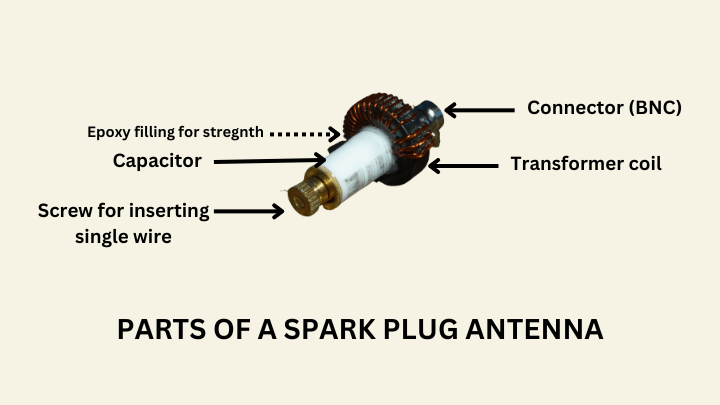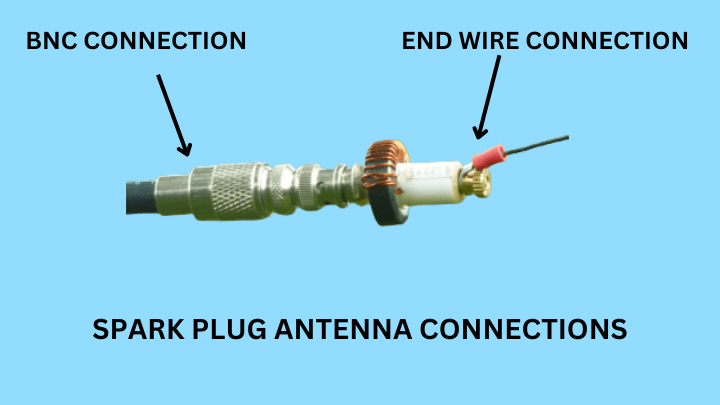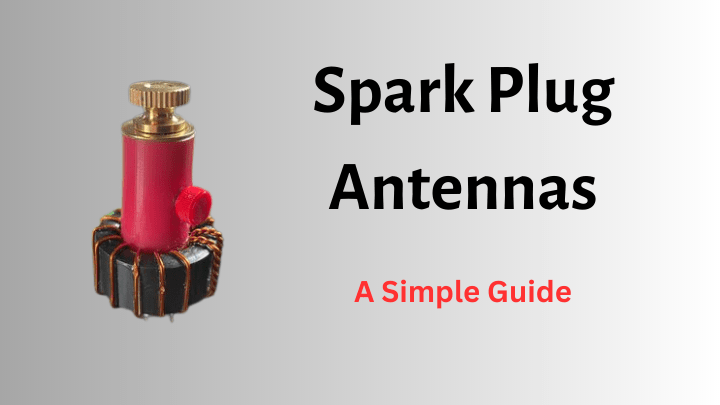You may have heard the term “Spark plug antenna” and you may be wondering why the thing “spark plug” generally heard with automobiles only is associated with radioing? Well in this article a brief introduction to it is given.
What is a spark plug antenna?
We know that antennas are devices that are used to radiate and receive radio energy in form of electromagnetic waves.
Spark plug antenna is designed for improved communication parameters generally with EFHW (End Fed Halfwave) configuration. It is generally used between the output of your transceiver (that is generally coming through a BNC connector) and the end wire (single) which you want to extend to gain the desired height in order to have coverage.
Broadly does not exactly look like an antenna as you may be imagining right now but it’s component that fits into your configuration. You will have clarity when you read about it’s build and configuration ahead.
Specifications and Build of spark plug antenna
A typical spark plug antenna comprises three main components:
- Central Conductor: Carries the alternating current which is connected through a BNC connector.
- A Capacitor: For resonance at desired frequency.
- Outer Conductor: Helps in shaping the radiation pattern. In spark plug antenna it is in form of a Transformer.
- Screw: For inserting and holding the end wire (single) which will then be extended to a desired height.
Here in the image basic parts of the Spark plug antenna are indicated:

The spark plug antennas being discussed are available on https://www.sparkpluggear.com/
It is made available in a low power 50W model as well as a large 100W model.
Some specifications mentioned for the Spark plug antenna are listed below:
- Type: EFHW Antenna
- Resonance: 10 – 80 Meters (No tuner required, however you’ll need antenna tuner to tune your wire to the desired band)
- Power: 50W (Small model), 100W (Large model)
- Modes: SSB/CW
- Transformer ratio: 64:1
- Connector: BNC
- Recommended Coaxial length: Min-25Ft, Max-75Ft
- Make: Handmade
How a spark plug antenna is used?
A nice experiment cum review video by KI5NPL is embedded here for reference.
Using your spark plug antenna involves following steps:
Prepare the spark plug
Clean the spark plug and remove any non-metallic parts or dirt. Make sure it is in perfect usable condition. Check the epoxy holding the capacitor and core ensure it is mechanically ok.
Coaxial cable attachment

Cable coming from your transceiver with BNC connector will be connected to the one end of the spark plug antenna.
Wire attachment
The metal base of the spark plug antenna will be connected to a insulated wire as shown. Generally the end wire is soldered, but here the screw is given to just insert the single wire and tight it.
Make sure you have made proper grounding/earthing arrangements.
Wire Length extension
Now extend the single wire as per the desired band or frequency. Generally a shorter wire will be used for higher frequency and longer wire will be used for lower frequency.
Mounting and positioning
Once the desired length of end wire is obtained, it’s time to mount it. It can be done at your convenience. Whether you do it with a pole or a tree or do some mounting with adjoining PVC pipes. Then you can position it and try to send or receive signals.
Tuning with SWR meter
You will need to use SWR meter (An antenna tuner) in order to tune the setup to the required band and achieve desired SWR reading. Make sure you at least achieve a SWR of near 1.50.
Benefits of using a spark plug antenna
There are many benefits of using a spark plug antenna.
Small Size
Being very small and very efficient in enhancing efficiency of your radio setup is a good pro. It is very small and easy to store and carry.
Simpler setup
Setup itself is not that complicated. It just needs simple connection at both the ends and some tuning to achieve the SWR as per desired band and you are good to go.
Enhanced signal strength
It will drastically boost the signal strength enabling you to communicate at extended distances in an effective way.
Reduced Interference
It effectively mitigates interference too. It captures desired signals (and thereby rejecting unwanted radio energy) and reduces interference from other channels to give you a crisp result.
Improved coverage
It improves coverage to a greater extent which is a prime need for a radio operator. I have watched some videos showing experiments with this Spark plug antennas and achieving coverage from several hundred to thousand miles.
Spark plug antenna: Conclusion
Using Spark plug antenna in your setup and experimenting will only enhance your experience and expertise. As we have seen in this guide, its not a “rocket science” to implementing the setup with this tiny little antennas. It has many advantages and it’s available at affordable price around $45.00 for the smaller one and around $85.00 for the larger one and that too handmade.
So Best of luck for your upcoming experiment with this tiny spark plug antennas.
Also Read: Best Mobile Ham radio Antennas
FAQs on park plug antenna
-
Can I install a spark plug antenna myself?
Yes, many spark plug antennas are designed for easy installation and can be installed as a DIY project. However, if you’re not comfortable working with vehicle components, it’s advisable to seek professional installation.
-
Will a spark plug antenna improve my vehicle’s radio reception?
Yes, spark plug antennas can significantly improve radio reception by reducing electromagnetic interference, leading to clearer and more consistent communication signals.
-
Can spark plug antennas be used for satellite communication?
While spark plug antennas are efficient for short to medium-range communication, they might not be suitable for long-distance satellite communication due to signal attenuation.
-
Where can I get a Spark Plug Antenna?
You can order one at www.sparkpluggear.com. They have two models available.
1.Spark Plug 9:1 Random Wire Transformer – 100 W: The 9:1 Spark Plug provides 80 m through 10 m band coverage in the familiar Spark Plug form factor. You will need a tuner, but with a single antenna wire setup, all the bands can be in your grasp. Unlike the other Spark Plugs, a counterpoise lug is incorporated into the design.2.Spark Plug EFHW Antenna – 50 W Version: The ultimate End Fed Half-Wave (EFHW) antenna transformer to support your SOTA, POTA and just plain get-out-and-make-some-QSO’s operations.

